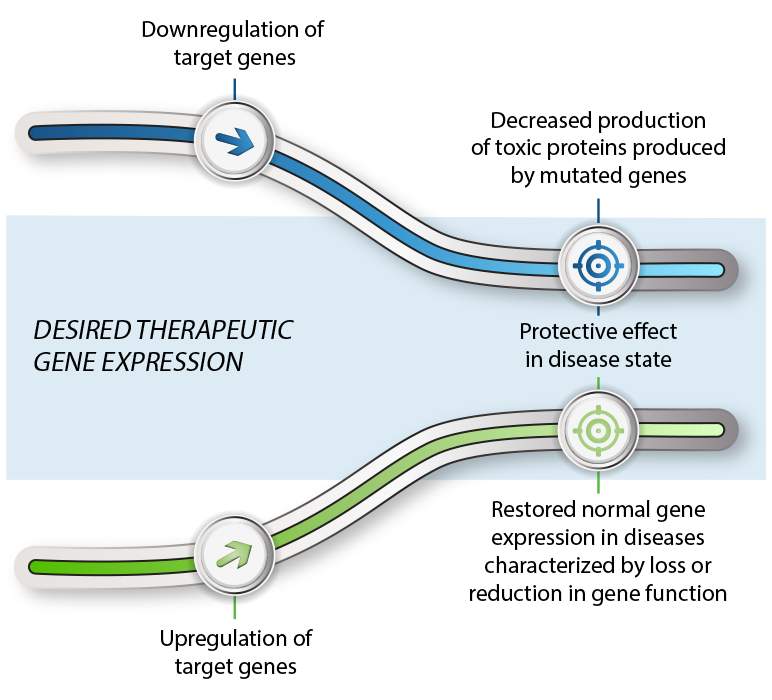Axial partners with great founders and inventors. We invest in early-stage life sciences companies such as Appia Bio, Seranova Bio, Delix Therapeutics, Simcha Therapeutics, among others often when they are no more than an idea. We are fanatical about helping the rare inventor who is compelled to build their own enduring business. If you or someone you know has a great idea or company in life sciences, Axial would be excited to get to know you and possibly invest in your vision and company . We are excited to be in business with you - email us at info@axialvc.com
Who leads Encoded Therapeutics?
Encoded was founded in 2014, starting off as Encoded Genomics, by Kartik Ramamoorthi and Stephanie Tagliatela to develop gene therapies for genetic diseases. Ramamoorthi (CEO) earned his PhD in Molecular and Cellular Neuroscience at MIT where he also helped with the formation of Voyager Therapeutics, which is developing gene therapies for neurodegenerative diseases. Tagliatela (CSO) was also in the same graduate program at MIT as Kartik, and decided to leave her PhD research early to start Encoded.
What does Encoded do?
The company is building a pipeline of cell-specific gene therapies targeting regulatory regions to treat rare pediatric CNS disorders with a focus on SCN1A-positive Dravet Syndrome, a form of pediatric epilepsy. Ultimately, Encoded has built a platform to treat a wide range of genetic diseases.
Encoded’s platform combines genomic discovery with adenoassociated viral (AAV) gene therapies. The former part is used to discover regulatory regions that are important drivers for a disease, while the latter relies on new regulatory elements within an AAV vector to increase cell specificity and imbue endogenous gene control. Current gene therapies focus on inserting new genes whereas Encoded is designing gene therapies targeting regulatory regions of genes. The key themes for the company’s platform are:
Cell-type specificity - Encoded identifies and uses regulatory elements that activate gene expression in certain cells. Once these elements are developed, they are inserted into an AAV gene therapy.
Potency - the company has matches these elements and tunes the AAV’s promoters for gene expression of the cargo
Endogenous gene control - rather than delivering a gene, Encoded uses AAVs to deliver transcription factors and other modalities to upregulate or downregulate the expression of endogenous genes
With these technologies, Encoded’s first focus is Dravet syndrome. The disease is a rare genetic disorder affecting 1 in 16,000 births. Most patients, around 80%, have a loss-of-function (LoF) mutation in the SCN1A gene leading to ataxia, seizures, and childhood mortality. Existing therapies for patients focus on reducing seizure but not SCN1A haploinsufficiency. Their lead asset, ETX101, is focused on increasing SCN1A expression, and was granted Orphan Drug Designation (ODD) and Rare Pediatric Disease Designation by the FDA and is set up for phase 1 trials in 2021 to treat patients with SCN1A+ Dravet Syndrome.
Early data in mouse models have been promising. Encoded designed an AAV vector with a transcription factor for the upregulation of the endogenous SCN1A gene. The expression of the AAV’s cargo is controlled by a GABA-selective human regulatory element. In a Dravet Syndrome mouse model (SCN1A+/−), Encoded’s AAV vector significantly reduced seizes and mortality rates: 53.3% of mice treated with only a vehicle control experienced a seizure while 5.6% of mice treated with Encode’s drug candidate had a seizure and reduced risk of death from epilepsy by around 89%.
What makes Encoded unique?
Encoded’s focus on regulatory elements makes them a pretty differentiated gene therapy company. The engine for the business is a discovery engine integrating genomics with computational tools to discover human regulatory sequences in a comprehensive way. The data Encoded generates is used to design AAVs with precise transgene expression to (1) maximize therapeutic effects (2) minimize non-specific cell expression and (3) selectively upregulate or downregulate an endogenous gene.
Once the proper regulatory elements are discovered and used, Encoded pursues targets that control gene expression. Whereas most gene therapies traditionally work to introduce a new transgene, knockout faulty genes, or replace a gene with another copy. Long-term, Encoded can bring this approach to other delivery vehicles beyond AAVs to ensure cell-selective expression and drugging of gene expression.
Why I like what Encoded is doing?
Encoded’s clever use of regulatory elements for AAV control but also as a drug target is an interesting case study on the power of combining two fields together. With decades-long research in AAV, the company is a testament to the power of taking a fresh approach. With exponential growth of genomics, the ability to discover new regulatory regions has become easier year after year. As a result, the Encoded founders saw an opportunity to bring this new feature to gene therapies. The clinical data from their lead asset in Dravet Syndrome will be exciting to monitor as well as the growth of Encoded’s pipeline and partnerships.
You can find Encoded Therapeutics here.







